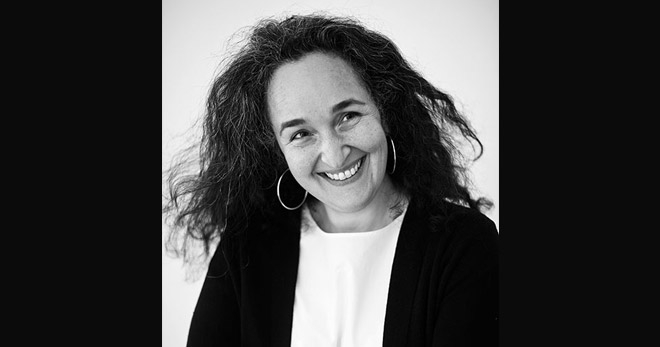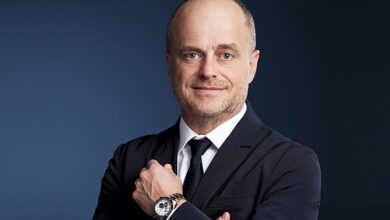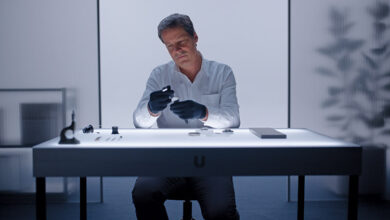Adler Joailliers: Storytellers in gold

Adler Joailliers traces its origin back to the year 1886 when Austro-Hungarian goldsmith Jacques Adler, trained in the purest Viennese tradition, founded the first workshop. Keeping up with the times, the fourth generation of Adlers have now infused new ideas into the maison
“Day & Night Magazine” had the privilege of catching up with Karen Adler, who has moved from the world of movies to fine jewellery and is now in the family business.
Q:How hard or easy was it to switch from such different fields – from movies to jewellery?
They are not that different – in the movie business, you turn a script into a film; in the jewellery business, you turn a design into a piece. The process is the same: you imagine something; you create a story and you build it up into a piece that exists. You have to finance this process and then sell the final product. It was not that difficult to make the move – in our family, we have always liked telling stories and turning them into something real. This is what I am still doing and I am happy to have made the move.

What are the changes that have been made in the company since you took over and what are your future plans?
There have been a lot of changes. The world is changing fast. Since last year, when my uncle and father have stepped back as advisers and handed over management to my cousin Allen, his wife Daisy, and myself, we have been extremely busy. We are focusing on more integration and communication within the company. Earlier, all decisions were made by my uncle and father; now, the world is moving very fast and we needed a strong team that can take responsible decisions.
How is the recession happening around the whole world affecting your high-end luxury brand?
High-end luxury is not affected much in a recession; people who have money will always have money, and usually get richer when there is economic turmoil. Some brands are suffering in some places, such as China. One of the problems is that they are so big that they cannot change fast. We are like chameleons; we are very adaptable. The reason some brands are suffering is because people are tired of big brands and now are looking for something more authentic, more personal – and we are here to fill this gap. But then, Alder is not just high-end; we also have an affordable segment.

How is the sales of your mid-market range compared to your Haute Joaillerie sales and was the mid-market creations a good idea?
We have three segments because there is a demand for it. The first segment is the Access or Basic Collection ranging from CHF3,000 to CHF20,000. We have exclusive lines where we produce limited editions – starting at CHF20,000 up to CHF200,000. Then we have high-end, which are unique pieces; these range from CHF200,000 and can go on; there is no limit. We also create a lot of bespoke pieces on demand, which are of course unique and in the high-end range.
Even people who buy high-end jewellery might like to buy something for everyday wear. So they will buy something in the CHF20,000–CHF60,000 range for day wear.
How has Adler been able to cope with the decreasing age of the buyers of high-end luxury goods? What is your strategy to attract the millennials?
That is a challenge; we have taken up this challenge by firstly changing management. We are around 20 years younger than my uncle and that is the first step. This means a lot of new energy in the company. We have been thinking about digital and we are planning to launch our new website and our digital platforms on Facebook and Instagram by March.
It is difficult to address the digital world because we have to find a way to communicate to them the Adler way. There has been a lot of pressure about our lack of presence in the digital world, but it actually takes a lot of effort. We currently have put together a think-tank in our marketing team to find an appropriate way to communicate to our clients.

What is the feedback from clients about your use of unusual materials such as carbon and wood in your jewellery?
As a brand, we have always been forward-thinking since the time my great-grandfather used silk in his creations. We have strived for new materials and ways of creating a dialogue between stones, the colouring of stones and other materials. We were the first to introduce titanium in high-end jewellery. We had to invent the tools to set the stones in titanium. A lot of brands are using it now; we started using it 20 years ago.
We also were the ones to introduce carbon in high-end jewellery; it was being used in watches but not jewellery then. We are now working on fossilised wood and we look out for new materials all the time.
When we create something, it has to be joyful and invoke your imagination, only then will it resonate with the client. Titanium is not as easy to sell as gold; it doesn’t have the same value even though it is harder to work with than gold and the final product costs more than gold. You can make more forms in titanium than in gold. Though it is a harder material, it is lighter. We have just created a huge flower in titanium, all set with diamonds and sapphires; it is an amazing piece.
Where do you see the brand five years from now?
Hopefully, we would have made the right choices to help us to maintain and develop the brand. To be alive, you have to keep creating and surprise people, and give them beautiful stories and joy. The fact that we have an ongoing dialogue with our clients will help us give them what they want.





